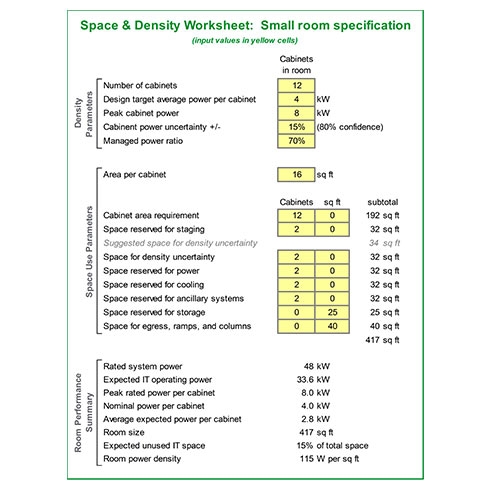The historic method of specifying data center power density using a single number of watts per square foot (or watts per square meter) is an unfortunate practice that has caused needless confusion as well as waste of energy and money. This paper demonstrates how the typical methods used to select and specify power density are flawed, and provides an improved approach for establishing space requirements, including recommended density specifications for typical situations.
There are four major problems with the historic practice of describing power density in terms of watts per square foot or watts per square meter.
1. What is included in the area calculation, or how it relates to the number of IT cabinets or devices is not defined.
2. What is included in the power calculation is not defined.
3. It provides no information about the variation in power across a population of IT cabinets; is it a peak number? An average over area? An average over time? Or some other value?
4. It is not clear how this number is used in a data center that has a changing growth plan or is modular or built out over time.
In principle, the first two problems could be improved by establishing standard definitions for power and area. However, the third and fourth problems are very important and cannot be solved by improving current definitions. A better approach to specifying density considers the reality that IT power varies among cabinets as well as over time, and comprehends the issues of modularity and growth. These problems can be summarized with the following statement:
Specify too low a density and performance becomes unpredictable with various overload and overheating problems occurring; specify too high a power density and first cost and operating expenses are needlessly increased.


